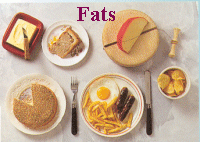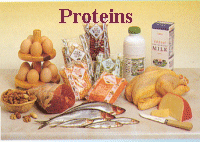


Nutrition 
For every physical activity, the body requires energy and the amount depends on the duration and type of activity. Energy is measured in kcal and is obtained from the body stores or the food we eat. Glycogen is the main source of fuel used by the muscles to enable you to undertake both aerobic and anaerobic exercise. If you train with low glycogen stores, you will feel constantly tired, training performance will be lower and you will be more prone to injury and illness.
A calorie (cal) is the amount of heat energy required to raise the temperature of 1g of water 1°C from 14° to 15°C. A kilocalorie (kcal) is the amount of heat required to raise the temperature of 1000g of water 1°C.
Nutrient Balance
Carefully planned nutrition must provide an energy balance and a nutrient balance.
The nutrients are:
- Proteins - essential to growth and repair of muscle and other body tissues
- Fats - one source of energy and important in relation to fat soluble vitamins
- Carbohydrates - our main source of energy
- Minerals - those inorganic elements occurring in the body and which are critical to its normal functions
- Vitamins - water and fat soluble vitamins play important roles in many chemical processes in the body
- Water - essential to normal body function - as a vehicle for carrying other nutrients and because 60% of the human body is water
- fiber - the fibrous indigestible portion of our diet essential to health of the digestive system
What are the daily energy requirements?
Personal energy requirement = basic energy requirements + extra energy requirements
Basic energy requirements (BER)
- For every Kg of body weight 1.3 kcal is required every hour. (An athlete weighing 50Kg would require 1.3 × 24hrs × 50Kg = 1560 kcal/day)
Extra energy requirements (EER)
- For each hours training you require an additional 8.5 kcal for each Kg of body weight. (For a two hour training session our 50Kg athlete would require 8.5 × 2hrs × 50Kg = 850 kcal)
An athlete weighing 50Kg who trains for two hours would require an intake of approx. 2410 kcal (BER + EER = 1560 + 850)
Energy Fuel
Like fuel for a car, the energy we need has to be blended. The blend that we require is as follows:
- 57% Carbohydrates (sugar, sweets, bread, cakes)
- 30% Fats (dairy products, oil)
- 13% Protein (eggs, milk, meat, poultry, fish)
The energy yield per gram is as follows: Carbohydrate - 4 kcal, Fats - 9 kcal and Protein - 4 kcal. (Note: 1 calorie = 1 Kcal)
What does a 50 kg athlete require in terms of carbohydrates, fats and protein?
- Carbohydrates - 57% of 2410 = 1374 kcal - at 4 kcal per gram = 1374 ÷ 4=343 grams
- Fats - 30% of 2410 = 723 kcal - at 9 kcal per gram = 723 ÷ 9 = 80 grams
- Protein - 13% of 2410 = 313 kcal - at 4 kcal per gram = 313 ÷ 4=78 grams
Our 50kg athlete requires 343 grams of Carbohydrates, 80 grams of Fat and 78 grams of Protein



